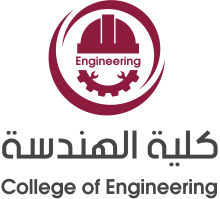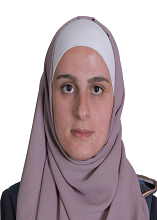I would like to extend a warm welcome to our beloved students on behalf of the Civil Engineering Department at Amman Arab University. May your journey be filled with continued success and precious knowledge. In alignment with the university's strategic goals and its forward-looking vision, the start of Civil
Engineering “CE” department was in fall semester 2016/2017. The major of CE holds a significant position among the primary engineering branches in both public and private higher education institutions, as it effectively caters to the demands of the local and global job market for adept engineering professionals.
Our department aims for excellence in education, research, and inventive contributions. We take great pride in our role as mentors, guiding the forthcoming generation of civil engineers who will play a pivotal role in shaping the future of our cities. The Civil Engineering major aims to prepare engineers with an exemplary integrated preparation from both theoretical and practical aspects to meet the needs of the Jordanian, regional and international community in various fields of civil engineering. The study plan was prepared in accordance with the standards of the Jordanian Higher Education Accreditation Commission, and to comply with international accreditation standards ABET.
The study plan consists of 162 credit hours to grant a bachelor’s degree in civil engineering, which qualifies the engineer to join the Jordanian Engineers Association.
Finally, we believe in cooperation, diversity, and continuous learning, and our goal is to empower the next generation of civil engineers with the knowledge and skills they need to make a positive impact on society.
Dr. MOHAMMAD SEHWAIL
Acting The head of the department
About the Bachelor of Civil Engineering
The Department of Civil Engineering at Amman Arab University was established in the beginning of the academic year 2016/2017 to award bachelor’s degree of civil engineering. This program aims to raise the competence of graduates of the specialization in line with labor market at local and international levels and to help them acquire communication and teamwork skills. The study plan includes the areas of project and construction management, roads and traffic, water and environmental engineering, using specialized software, design, modern checks, familiarity with the Jordanian building specifications and code, quantities and economic calculation, and the selection of appropriate mechanisms. The department aims to provide the engineering sector with qualified engineering competencies capable of managing and applying the modern international standards to building systems, upgrading engineering and construction work, engineering capabilities of the buildings and construction sector. In addition, the program aims at introducing, developing and enhancing modern scientific technologies and concepts in this field. The Faculty of Engineering is equipped with high technologies, laboratories and infrastructure necessary to fulfill the requirements of specialization.
Vision
Entrepreneurship and distinction in civil engineering, teaching, research, and application locally and regionally.
Mission
Generate and graduate staff of engineers who are able to compete in the job market with high professionalism, supported by the skills, knowledge and ethics of the profession, and employing them in achieving comprehensive and sustainable development.
Civil Engineering Major Bachelor’s Program
Program Mission:
To provide distinguished academic programs in the field of civil engineering supported by the knowledge, skills and ethics of the profession through qualified staff capable of keeping up with local and international standards in accordance with the E-learning integration standards.
Educational Program Objectives:
Contribute effectively to societies, through the gained technical, analytical, and managerial skills, and be up to date with the latest technologies and innovations in Civil engineering areas, including the development of sustainability factors.
Be motivated and self-confident toward life-long learning, practicing, and developing their knowledge through a professional career path, pursuing higher education and scientific research in advanced areas of Civil Engineering to produce solutions for complex engineering problems.
Practice professional competence ethically, and apply leadership principles through commitment, teamwork, and skills of communication to empower advancements in their career.
Educational Program Outcomes:
The expected outcomes of this program are preparing graduates competent in:
- An ability to identify, formulate, and solve complex engineering problems by applying principles of engineering, science, and mathematics.
- An ability to apply engineering design to produce solutions that meet specified needs with consideration of public health, safety, and welfare, as well as global, cultural, social, environmental, and economic factors.
- An ability to communicate effectively with a range of audiences.
- An ability to recognize ethical and professional responsibilities in engineering situations and make informed judgments, which must consider the impact of engineering solutions in global, economic, environmental, and societal contexts.
- An ability to function effectively on a team whose members together provide leadership, create a collaborative and inclusive environment, establish goals, plan tasks, and meet objectives.
- An ability to develop and conduct appropriate experimentation, analyze and interpret data, and use engineering judgment to draw conclusions.
- An ability to acquire and apply new knowledge as needed, using appropriate learning strategies.
Mapping of Program Educational Objectives (PEO's) with Students Outcomes (SO's)
Program Educational Objectives (PEOs)
- Demonstrate a fundamental understanding of the basic sciences, mathematics and engineering concepts by applying them to Civil Engineering problems.
- Analyze formulate and solve problems in the field of Civil Engineering with the effective use of necessary tools & techniques.
- Be motivated and confidently engaged in continuous self-learning practice and pursue research in advanced areas of Civil Engineering applications in order to offer engineering services.
- Competent, develop, communicate and contribute effectively in the advancement of Civil Engineering with great imperious to pursue higher education.
- Contribute professionally in playing a recognized role as pioneers and leaders in multi-disciplinary projects.
Students Outcomes (SOs)
- An ability to identify, formulate, and solve complex engineering problems by applying principles of engineering, science, and mathematics.
- An ability to apply engineering design to produce solutions that meet specified needs with consideration of public health, safety, and welfare, as well as global, cultural, social, environmental, and economic factors.
- An ability to communicate effectively with a range of audiences.
- An ability to recognize ethical and professional responsibilities in engineering situations and make informed judgments, which must consider the impact of engineering solutions in global, economic, environmental, and societal contexts.
- An ability to function effectively on a team whose members together provide leadership, create a collaborative and inclusive environment, establish goals, plan tasks, and meet objectives.
- An ability to develop and conduct appropriate experimentation, analyze and interpret data, and use engineering judgment to draw conclusions.
- An ability to acquire and apply new knowledge as needed, using appropriate learning strategies.
Mapping between PEOs and SOs:
| PEOs | SOs |
| PEO1 | 1,3,6 |
| PEO2 | 2,3,4,7 |
| PEO3 | 6,7 |
| PEO4 | 2,6,7 |
| PEO5 | 2,3,4,5 |
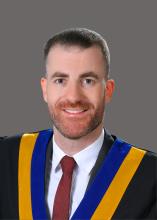
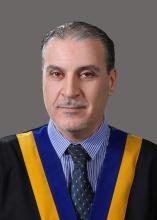
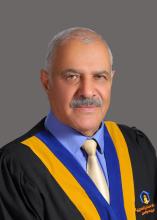
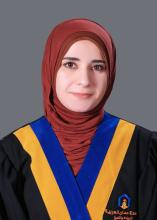

| Number | List of Research Papers | Abstract |
1 | Al Tarawneh, Khalid (2016),CHARACTERIZATION OF ZEOLITIC TUFF FROM NORTHEAST JORDAN USING BOREHOLES DATA | Download |
2 | Al Tarawneh, Khalid (2016), A COMPREHENSIVE OUTLOOK OF MINING INDUSTRY IN JORDAN, OPPORTUNITIES AND THREATS | Download |
3 | Al Tarawneh, Khalid (2016), A COMPFRACTIONAL YIELD, EXTRACT COMPOSITION AND VARIABILITY FROM JORDANIAN OIL SHALES | Download |
| 4 | Al Tarawneh, Khalid (2016), SUSTAINABILITY OF PHOSPHATE AND POTASH RESERVES IN JORDAN | Download |
| Number | List of Research Papers | Abstract |
1 | Ahmad, O. (2017). Production of – High-Performance Silica Fume Concrete, American Journal of Applied Sciences, 14 (11): 1031.1038 | Download |
2 | Awwad, M., Ahmad, O. (2017). Effects of Different Environments on Reinforcement Concrete Corrosion, American Journal of Environmental Sciences, 13 (4): 307.314 | Download |
3 | Ahmad, O. (2017). Using Crump Rubber (CR) of Scrap Tire in Hot Mix Asphalt Design, , American Journal of Applied Sciences, 14 (2): 274.285 | Download |
| 4 | Asad, Omar (2017), Production of high-performance silica fume concrete | Download |
| 5 | Asad, Omar (2017), Effects of Different Environments on Reinforcement Concrete Corrosion | Download |
| 6 | Asad, Omar (2017), Using Crump Rubber (CR) of Scrap Tire in Hot Mix Asphalt Design | Download |
| 7 | Ayyad, Sami (2017), EFFECT OF CONCRETE PARAMETERS ON LOCAL FRACTURE ENERGY OF CONCRETE | Download |
| 8 | Mohammed Thalji Awwad, Omar Asad Ahmad, (2017), Effects of Different Environments on Reinforcement Concrete Corrosion, American Journal of Environmental Sciences | Download |
| 9 | Omar Asad Ahmad, (2017), Using Crump Rubber (CR) of Scrap Tire in Hot Mix Asphalt Design, American Journal of Applied Sciences. | Download |
| 10 | Omar Asad Ahmad, (2017), Production of high-performance silica fume concrete, American journal of applied sciences. | Download |
| Number | List of Research Papers | Abstract |
1 | Asad, Omar, (2018), The Effect of Chlorination and Sand Grain Size on Adsorption-Retention of Some Heavy Elements in Sulfide Water | Download |
| 2 | Omar Asad Ahmad, (2018), The Effect of Chlorination and Sand Grain Size on Adsorption-Retention of Some Heavy Elements in Sulfide Water, 1st International Conference on Water SecurityAt: Canada-Toronto. | Download |
| Number | List of Research Papers | Abstract |
1 | Eleyan Issa Jamal Issa, Alrosan Sora2, Sallam Shoroq & Hammad Safaa, Pedestrian Bridge Simulation Using Wasted Tire Rubber with Two Boundary Systems, Modern Applied Science; Vol. 13, No. 11; 2019, ISSN 1913-1844 E-ISSN 1913-1852,Published by Canadian Center of Science and Education. | Download |
| 2 | Al Tarawneh, Khalid (2019), THE GEOLOGY, STRATIGRAPHY AND STRUCTURE OF MA’AN AREA, SOUTH JORDAN | Download |
| 3 | Al Tarawneh, Khalid (2019), PEAK PHOSPHATE IN JORDAN | Download |
| Number | List of Research Papers | Abstract |
1 | Asad, Omar, (2020), THE USEFULNESS OF CONSTRUCTION AND DESTRUCTION WASTE AS RECYCLED AGGREGATES IN CONCRETE | Download |
| 2 | Ayyad, Sami (2020), THE EFFECT OF STEEL FIBER AND INTERNALLY CURING ON THE STRENGTH OF SELF-CONSOLIDATED CONCRETE | Download |
| 3 | Eleyan Issa Jamal Issa (2020), The Effect of Steel Fiber and Internally Curing on the Strength of Self-Consolidated Concrete | Download |
| 4 | Eleyan Issa Jamal Issa (2020), ROOF INSULATION MATERIALS USING CEMENT, WOOD (SAWDUST) AND POLYSTYRENE | Download |
| 5 | Eleyan Issa Jamal Issa (2020), STRUCTURAL EFFICIENCY OF THE BUILDING FORM FOR OPTIMIZATION THE DIAGRID STRUCTURE | Download |
| 6 | Eleyan Issa Jamal Issa (2020), Study The Effects of Partially Substitution of Sand with Fine Glass on Mechanical Properties of Mortar | Download |
| 7 | Eleyan Issa Jamal Issa (2020), Transitional Shelter using Composite Gypsum Binders with Steel Fiber Construction Material | Download |
| 8 | Eleyan Issa Jamal Issa (2020), REHABILITATION OF RESIDENTIAL BUILDING WITH CORROSION DAMAGE: CASE STUDY IN AMMAN (MARJ - ALHAMAM ), JORDAN | Download |
| 9 | Eleyan Issa Jamal Issa (2020), STRATEGY OF INTEGRATING BUILDINGS WITH SMART SYSTEMS | Download |
| 10 | Eleyan Issa Jamal Issa (2020), ASSESSMENT OF HEAVY METALS CONTAMINATION LEVELS IN SURFACE SOIL IN BAQA'A AREA, JORDAN | Download |
| 11 | Olwan, Rakan (2020), ASSESSMENT OF HEAVY METALS CONTAMINATION LEVELS IN SURFACEC SOIL IN BAQA'A AREA, JORDAN | Download |
| 12 | Olwan, Rakan (2020), Rehabilitation of Residential Building with Corrosion Damage: Case study in Amman, Jordan | Download |
| 13 | Omar Asad Ahmad, (2020), THE USEFULNESS OF CONSTRUCTION AND DESTRUCTION WASTE AS RECYCLED AGGREGATES IN CONCRETE, International Journal of GEOMATE. | Download |
| Number | List of Research Papers | Abstract |
1 | O.A. Ahmad, S.M. Ayyad., (2020), SECONDARY TREATED WASTEWATER AS A CONCRETE COMPONENT AND ITS IMPACT ON THE BASIC STRENGTH PROPERTIES OF THE MATERIAL, April 2021Archives of Civil Engineering 67(1):571-583 | Download |
| 2 | O.A. Ahmad, S.M. Ayyad., (2020), THE USE OF SAND COLUMNS IN THE REINFORCEMENT OF WEAK LAYERS IN ROAD ENGINEERING,April 2021Archives of Civil Engineering 67(1):527-838 DOI:10.24425/ace.2021.136487 | Download |
| 3 | O.A. Ahmad, and others, (2021), FABRICATION OF POLYMER CONCRETE OF LIGHT WEIGHT AND HIGH PERFORMANCE, January 2021 | Download |
| 4 | O.A. Ahmad, and others, (2021), Assessment of Environmental Factors on Corrosion in Reinforced Concrete with Calcium Chloride, September 2021Civil Engineering and Architecture 9(6):1985-1995 DOI:10.13189/cea.2021.090627 | Download |
| 5 | Khaled Tarawneh, Issa Eleyan, Rakan Alalwan, Shoroq Sallam, Safa Hammad, (2021), Assessment of heavy metals contamination levels in surfaces soil in Baqa’a area, Jordan | Download |



